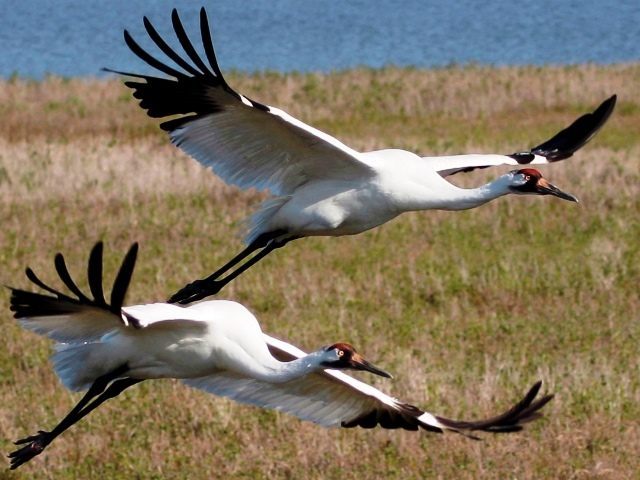Editor’s Note: This article was written and submitted to Breitbart Texas by Leigh Thompson, an attorney at the Center for the American Future and the Armstrong Center for Energy and the Environment at the Texas Public Policy Foundation.
October heralds the return of the endangered Whooping Crane to Texas. Over the next two months the only self-sustaining wild population of Whooping Crane will migrate from its summer home in Canada to its winter home in Aransas National Wildlife Reserve. Once close to extinction, this federally endangered flock has slowly continued to grow in size and is now close to 300 birds.
Unbeknownst to the Whooping Crane, this past May, seven years of litigation over water rights and the Whooping Crane habitat finally wrapped up in the Supreme Court. In Aransas Project v. Shaw an Endangered Species Act (ESA) claim had been directed at the Texas Commission on Environmental Quality’s (TCEQ) allocation of water rights. Had the Supreme Court reviewed and overturned the 5th Circuit’s decision, surface water rights in the San Antonio River and Guadalupe River would have been federally commandeered, with ramifications felt across the entire state.
At issue in Aransas were the deaths of four cranes, occurring during the 2008-2009 winters, and the alleged death of 19 more.
Using aerial surveys, the Fish and Wildlife Service’s local biologist conducted a visual count of adult and juvenile birds while his plane passed in parallel lines 200 feet above the ground. Using this method the biologist discovered four crane carcasses and estimated that 19 other cranes were missing, and presumed dead.
Though the court would not permit this as evidence, the 19 cranes that were presumed dead during the 2008-2009 winter season were spotted the following year.
The Aransas Project, an environmental group, brought suit under the ESA on behalf of itself and its members, seeking to federally injoin TCEQ from issuing new surface water rights for the river basins and seeking to curtail long-vested existing rights. The group claimed that the TCEQ had violated the ESA by failing to divert water, which had foreseeably harmed and harassed the cranes, ultimately causing their deaths. An unusual application of the ESA, the plaintiffs argued that TCEQ violated the ESA’s fundamental prohibition against the “take” of a species.
Aransas proved to be very fact heavy; during the 2008-2009 winter season drought caused lower flows in the San Antonio and Guadalupe rivers, which feed into the estuary of Aransas Bay. The plaintiffs argued that lower flows caused higher salinity in the rivers, providing less drinking water for the cranes as well as a reduction in the amount of blue crabs and wolfberries – two food sources the cranes rely on.
Ultimately, the District Court issued the injunction by finding TCEQ directly liable under the ESA. The Court reasoned that Service’s aerial survey and the 2008-2009 drought were sufficient evidence to injoin the issuance of new surface water rights or the authorization of existing water rights. Adding insult to injury, on appeal, the District Court refused to consider previously unavailable evidence that the same number of cranes initially presumed dead had returned during the 2011-2012 season.
The 5th Circuit, on the other hand, found that the actual and alleged demise of the Aransas whooping cranes could not have been directly caused by the TCEQ’s issuance of surface water rights, nor could the TCEQ have foreseen such a remote consequence of their action and overturned the District Court’s holding.
On this point, the Court noted that TCEQ’s allocation of surface water rights in Texas authorize usage, but does not mandate it. Moreover, domestic and livestock users need not seek a permit at all and independent users drawing from the Edwards Aquifer can affect the availability and amount of water diverted to the estuary rivers in ways the TCEQ cannot control.
In order to impose liability under the ESA, the 5th Circuit found, that a governmental “take” requires an act which is foreseeable and which has a direct causal link to the event causing harm to the animal. This legal concept, the law of proximate cause, could not be used to impose liability when a butterfly flaps its wings in Texas, and a hurricane forms in Japan.
Thanks to the Supreme Court and the 5th Circuit, Texans can enjoy the return of the Whooping Cranes this winter, and breathe a little easier knowing we kept the Environmental Protection Agency out of the State in at least one way.
Leigh Thompson is an attorney at the Center for the American Future and the Armstrong Center for Energy and the Environment at the Texas Public Policy Foundation.

COMMENTS
Please let us know if you're having issues with commenting.